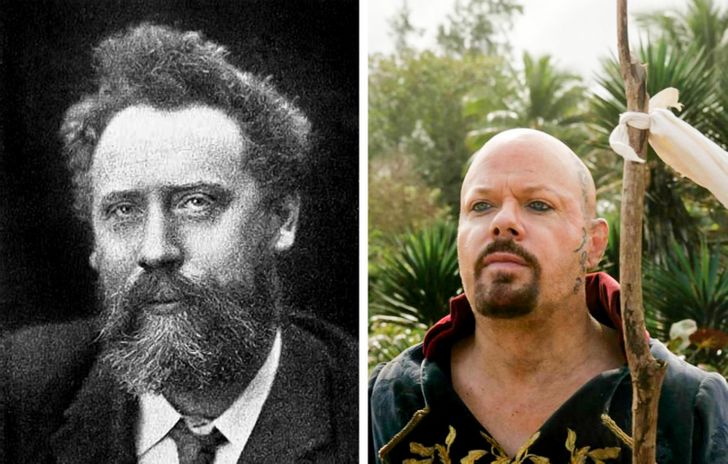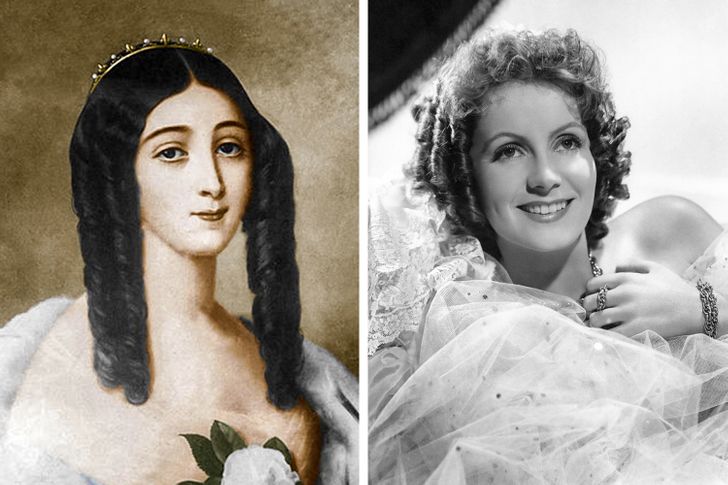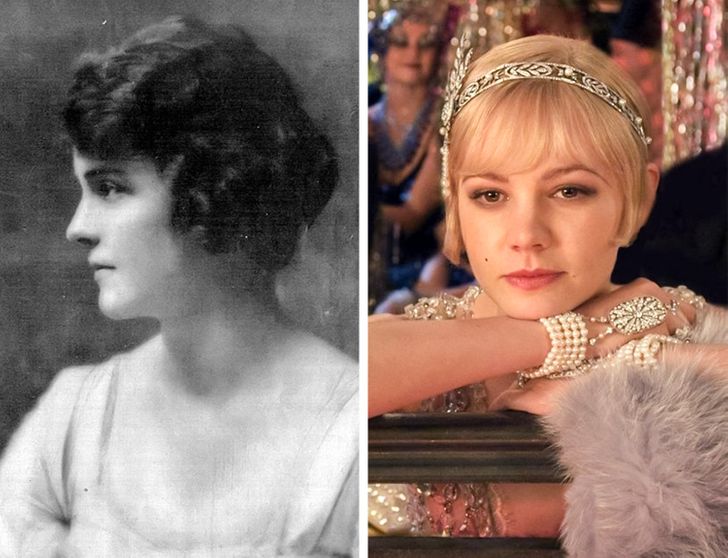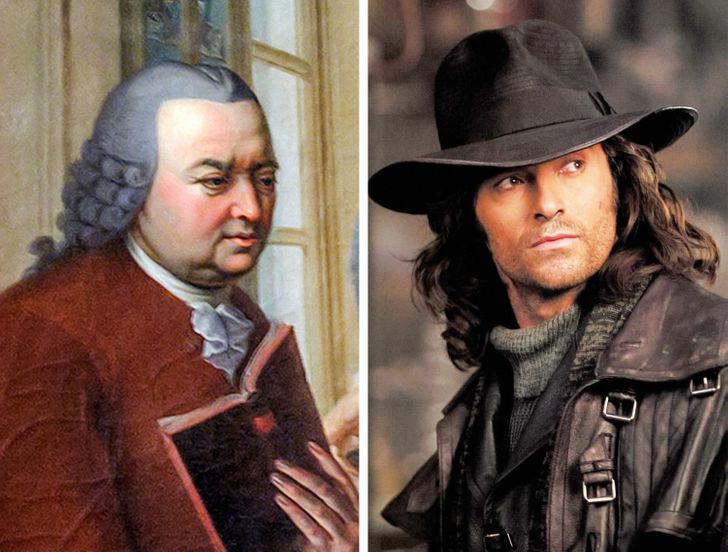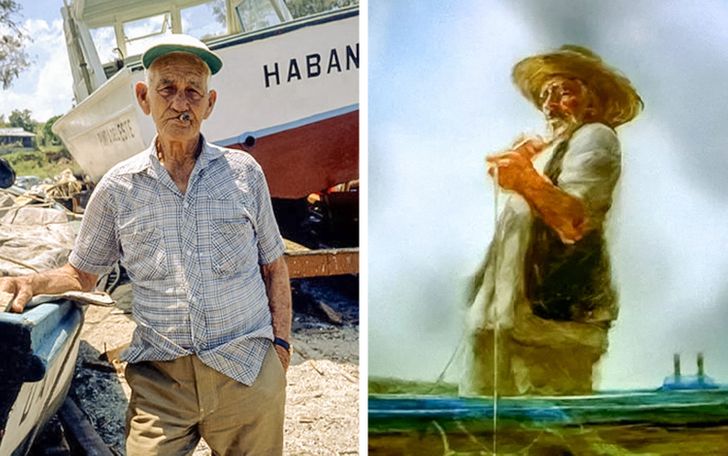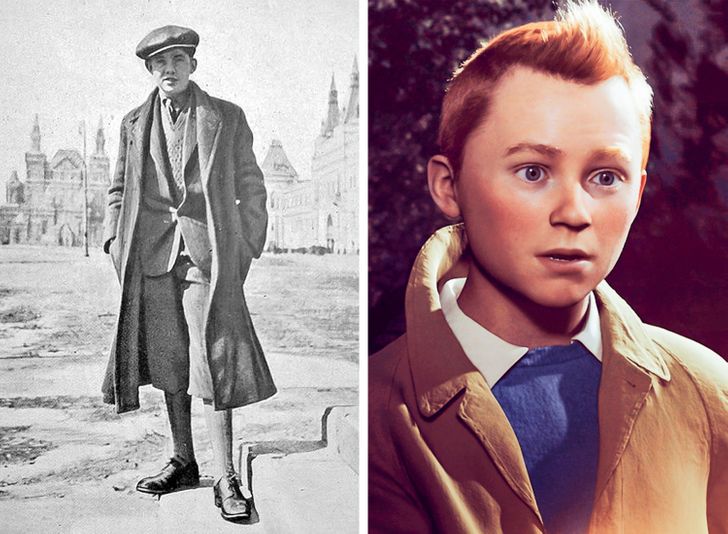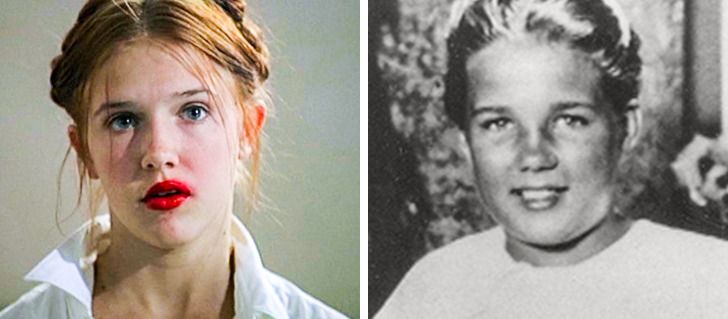Art does not come out of anywhere. You need ideas and images from real life or other art. That is why artists draw the people they see in the streets, musicians listen to birdsong, and writers dedicate their novels to the people they love.
Anything can be a source of inspiration, sometimes even really scary stories that we need to know to discover a different side to the novels we love. Do you know why Dumas fils wrote The Lady of the Camellias and not about other flowers?
We decided to tell stories about 7 characters based on unexpected events.
7. John Silver, Treasure Island
As a child, William Ernest Henley suffered from tuberculosis of the bone that resulted in the amputation of his left leg below the knee.
All his life he had to walk on crutches. People who knew him described him as a bearded man with a strong voice. One of the people who knew him was Robert Louis Stevenson.
Later, in a letter to Henley, Stevenson wrote: “Now I am going to make a confession: it was the vision of his mutilated strength and his mastery that generated Long John Silver … the idea of the man mutilated, ruling and feared by the sound, was entirely taken from you.”
6. Margarita Gautier, The Lady of the Camellias
The character of The Lady of the Camellias was inspired by Marie Duplessis, the love of Dumas fils. Tuberculosis caused her to stop buying strong-smell, like roses, and she developed a love for camellias because they almost have no smell at all.
5. Daisy Buchanan, The Great Gatsby
Ginevra King was born into the family of a wealthy Chicago businessman. At 16, she was sledding with her friends and met Francis Scott Fitzgerald, then 18.
They liked each other immediately, and their romance developed very quickly and lasted 2 years, but then Ginevra married the son of one of his father’s partners and told Francis in a letter.
Biographers think Fitzgerald probably heard that “poor boys shouldn’t dream of marrying rich girls” from Ginevra’s father.
4. Van Helsing, Dracula
Gerard van Swieten, a Dutch physician, was the personal physician to Holy Roman Empress Maria Theresa and used his position in the name of science.
He made many reforms and created the most advanced medical education system of the time, a botanical garden, and a chemistry laboratory.
Furthermore, Gerard was totally against superstitions and when Austria annexed part of the Balkans, he personally went to Moravia to investigate the “vampire attacks” that the local people were talking about.
After this trip, van Swieten made a report explaining all the cases from a scientific point of view and showing that there were no vampires.
Other doctors supported him and the empress officially banned the deaths of people who were thought to be vampires.
Gerard van Swieten was most likely the man who inspired Bram Stoker to create the character of a Dutch doctor who investigated vampirism.
3. Santiago, The Old Man and the Sea
Gregorio Fuentes met Ernest Hemingway in 1928, 24 years before the first appearance of The Old Man and the Sea. Gregory became the captain of the writer’s ship, cooked for Hemingway, went fishing with him many times (since they even caught a 300-pound blue marlin), and tracked German submarines during WWII.
Therefore, it is not surprising that Gregorio is considered the prototype of the character whose story has won numerous awards for Hemingway.
But Fuentes also benefited from this: Until he died (he was 104 when he died), journalists came to him and paid him well for each interview.
2. Tintin, The Adventures of Tintin
On what would be Jules Verne’s 100th birthday, the Danish newspaper Politiken started a contest for teenagers in 1928. The winner of the contest would have the opportunity to go around the world and the newspaper would pay for it.
The winner should do this in 46 days. The mode of transportation can be anything except airplanes. Among the hundreds of participants, a 15-year-old boy named Palle Huld was chosen.
He completed the trip in 44 days and 20,000 people met him in Copenhagen.
During the trip, Palle visited Germany, Great Britain, Poland, USSR, China, Korea, Japan, and Canada. The Tintin comic was published in 1928, the year after Palle’s trip.
Tintin, like his prototype, traveled the world and had various adventures. Palle and Tintin are very similar.
1. Dolores, Lolita
One of the possible prototypes of the main character in the novel may be the 11-year-old girl Florence Sally Horner. In 1948, the young American was kidnapped by a 50-year-old man who had traveled the country with her for a long time.
In the text of the novel, Vladimir Nabokov makes a direct reference to the case when Humbert asks: “If I had done to Dolly, maybe, what would Frank Lasalle, a 50-year-old mechanic, do to a Sally Horner of 11? years in 1948? “
Do you think it could be the prototype of a famous person?
